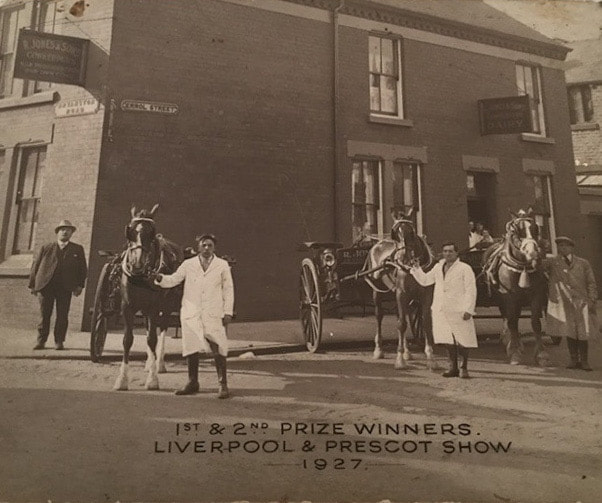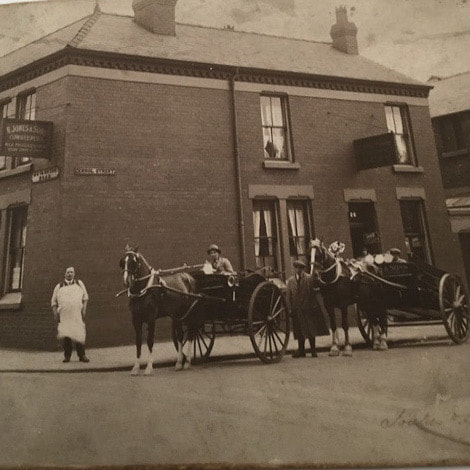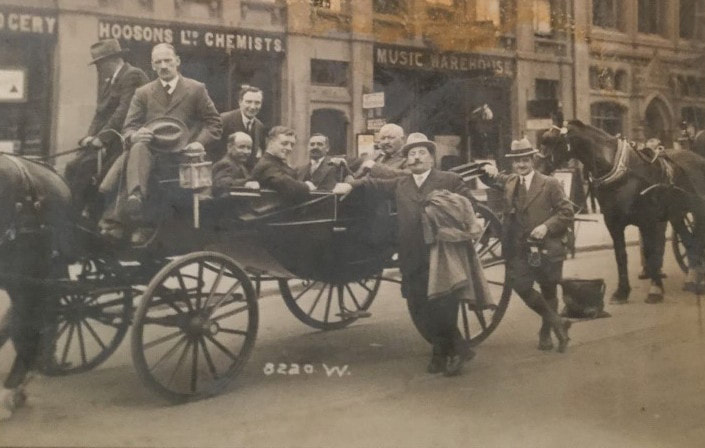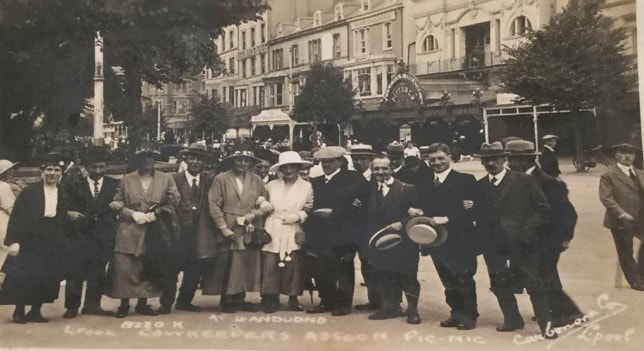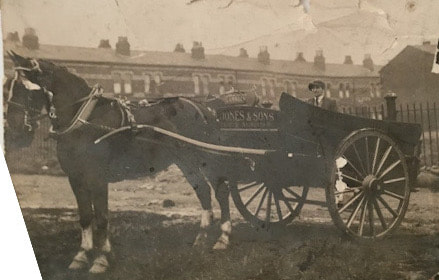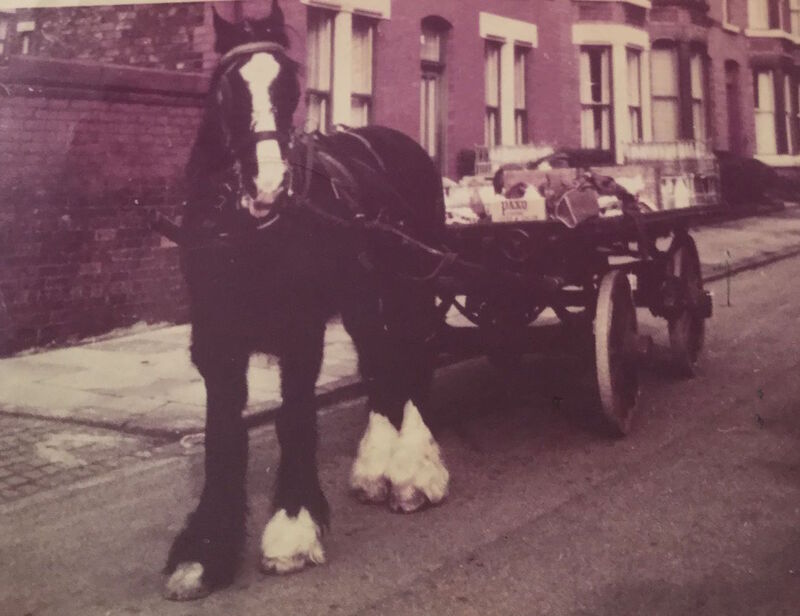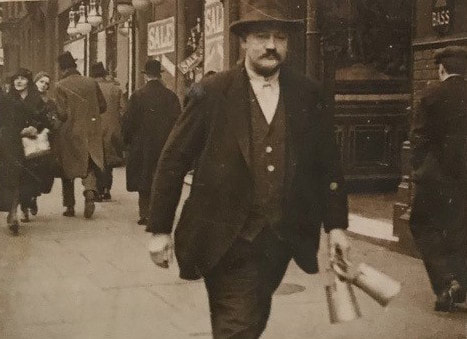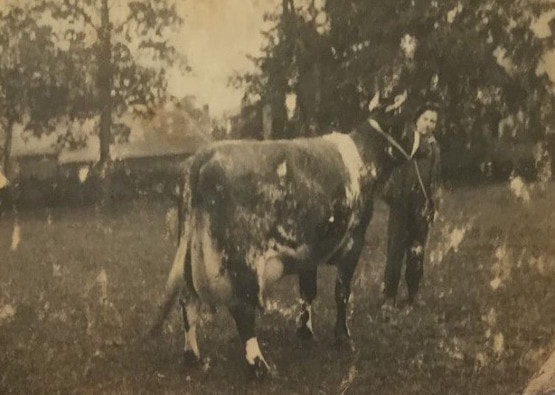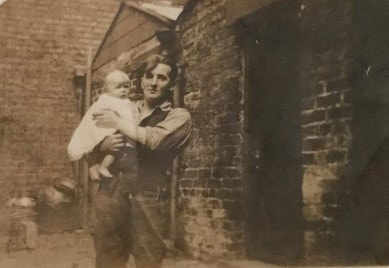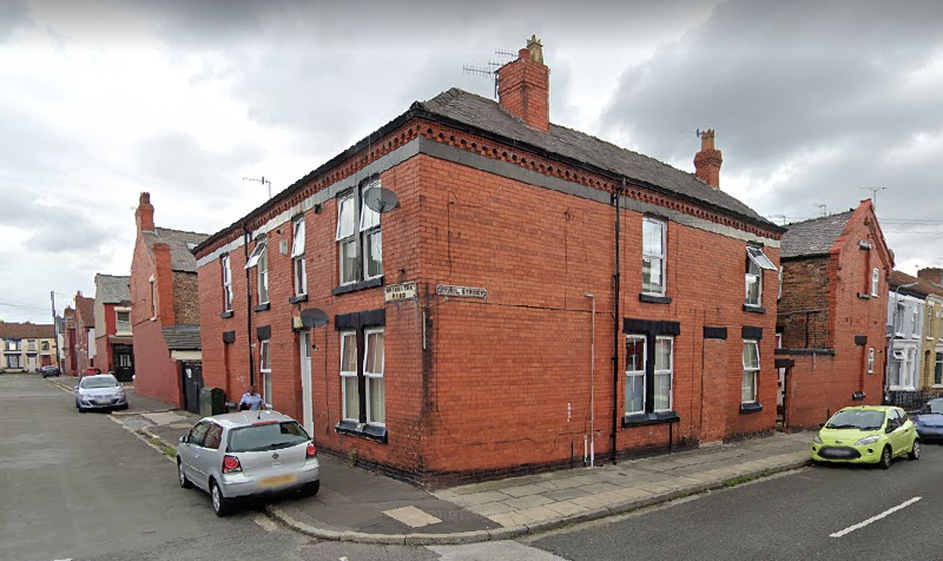The two most common surnames in the UK are Smith and Jones. A generally accepted truth in genealogy is that the more commonly occurring a surname is, the more difficult it is to trace that family history – simply because of the sheer volume of data available for you to sift through. The dilemma is compounded if you have more than one common surname in a family tree.
So, when Sue Murray contacted me about her great-grandparent’s dairy in Errol Street and told me their surname was Jones, it was with no small degree of trepidation that I began looking into her family’s history. It proved to be an interesting challenge. For, not only did I find a Jones who had married a Smith, but also a Smith who had married a Smith!
So, when Sue Murray contacted me about her great-grandparent’s dairy in Errol Street and told me their surname was Jones, it was with no small degree of trepidation that I began looking into her family’s history. It proved to be an interesting challenge. For, not only did I find a Jones who had married a Smith, but also a Smith who had married a Smith!
the smith family
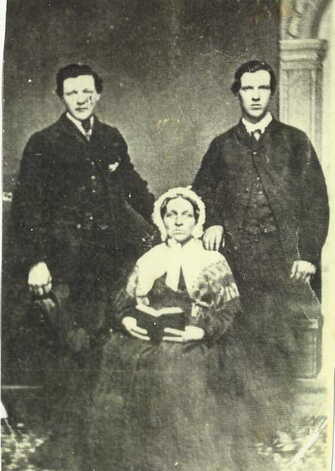 Sarah Trow with two of her sons.
Sarah Trow with two of her sons.
This cowkeeping family tree has its origins in the farms of Wales — specifically, Llanwnog in Montgomeryshire. Edward Smith (1801-1861) and Sarah Trow (1807-1885) had ten children, of which the youngest three would move to Liverpool to keep cows. They were: David Smith (b. 1845), Matthew Smith (b. 1847) and George Smith (b. 1850).
David Smith (1845-1902) married Hannah Davies (1848-1911) in 1867 in Newton, Montgomeryshire. They had 13 children and were living in Liverpool by the time their tenth child was born, in 1885. The 1891 census lists David as a Cowkeeper, living at 3 Grierson Street, along with his wife and seven children. Ten years later, he was a Cowman, living at 12 Rockhouse Street; his wife, Hannah, is listed as a Milk Dealer. When David died, in 1902, Hannah continued with the milk business. In 1911 she was a Milk Dealer at 33 Alder Street, being assisted by her daughter, Ethel. Hannah died later that year.
Matthew Smith (1847-1903) married Sarah Evans (b. 1853) in 1872, at St Mark’s Church, Liverpool. They had eight children, all born in Liverpool. In 1881, Matthew was a Cutter/Driller, living at 18 Hill Street. However, by 1891 he had become a Cowkeeper/Dairyman, living at 28-32 Caryl Street. In June 1899, their eldest daughter, Sarah Elizabeth Smith (b. 1873), married her cousin, George Smith (b. 1876), at Myrtle Street Chapel, Liverpool. George Smith was the son of Matthew’s brother (also George Smith). The 1900 directory gives an address for Matthew as 28-36 Caryl Street, suggesting he had expanded his business into the adjacent premises. When Matthew retired, George and Sarah Elizabeth took over the running of the Caryl Street dairy. Matthew moved to 31 Stanhope Street; he died in 1903.
David Smith (1845-1902) married Hannah Davies (1848-1911) in 1867 in Newton, Montgomeryshire. They had 13 children and were living in Liverpool by the time their tenth child was born, in 1885. The 1891 census lists David as a Cowkeeper, living at 3 Grierson Street, along with his wife and seven children. Ten years later, he was a Cowman, living at 12 Rockhouse Street; his wife, Hannah, is listed as a Milk Dealer. When David died, in 1902, Hannah continued with the milk business. In 1911 she was a Milk Dealer at 33 Alder Street, being assisted by her daughter, Ethel. Hannah died later that year.
Matthew Smith (1847-1903) married Sarah Evans (b. 1853) in 1872, at St Mark’s Church, Liverpool. They had eight children, all born in Liverpool. In 1881, Matthew was a Cutter/Driller, living at 18 Hill Street. However, by 1891 he had become a Cowkeeper/Dairyman, living at 28-32 Caryl Street. In June 1899, their eldest daughter, Sarah Elizabeth Smith (b. 1873), married her cousin, George Smith (b. 1876), at Myrtle Street Chapel, Liverpool. George Smith was the son of Matthew’s brother (also George Smith). The 1900 directory gives an address for Matthew as 28-36 Caryl Street, suggesting he had expanded his business into the adjacent premises. When Matthew retired, George and Sarah Elizabeth took over the running of the Caryl Street dairy. Matthew moved to 31 Stanhope Street; he died in 1903.
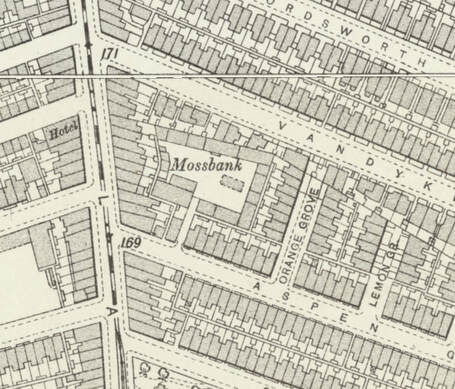 'Mossbank', Aspen Grove.
'Mossbank', Aspen Grove.
Sarah Elizabeth Smith (1873-1930) and George Smith (1876-1950) had eight children and went on to run the dairy at 28-32 Caryl Street as a family business for much of the next four decades. In October 1923, their eldest daughter, Lillian Frances Smith (1901-1991) married Jack Hodgkinson (1901-1968) at Myrtle Street Chapel. Jack came from a Cheshire farming family. The couple then had their own dairy at 1 Aspen Grove, which they acquired from Phineas Wooler. This was a small, detached house, separated from the rest of the terraced block by an alleyway, which ran between number 1 and number 3 Aspen Grove. The alleyway led to the rear of the properties where there was a large, rectangular yard with sandstone-built outbuildings on part of all four of its sides. This site is a good candidate for where the cows were kept. It was known as Mossbank and was bounded by properties on Aspen Grove, Orange Grove, Vandyke Street and Lodge Lane. Although 1 Aspen Grove has since been demolished, Mossbank still exists and is accessible via an alleyway running down the side of 3 Aspen Grove; it is used as a builder’s yard.
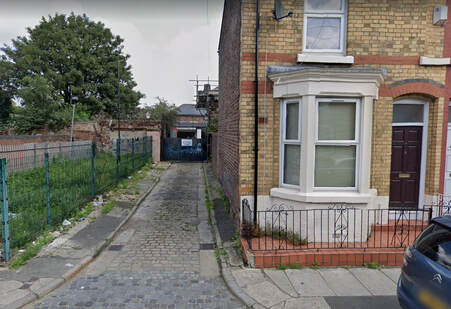 Access to 'Mossbank' adjacent to 3 Aspen Grove. © 2020 Google.
Access to 'Mossbank' adjacent to 3 Aspen Grove. © 2020 Google.
Following the death of Sarah Elizabeth, in 1930, George married Myra Mary Heague (1894-1942) and the couple had a son, Eric Dudley Smith (b. 1932). George entered his cows for local agricultural shows. 1938 was a particularly successful year for him: he won First Prize at the Royal Lancashire Agricultural Show (Fat Cow any weight) and then picked up another First Prize at Liverpool’s annual Christmas Show (Fat Cow over 14½ cwt.). The 1939 Register captures life at both of the family’s dairies: at 30 Caryl Street is George Smith (Dairy Farmer own a/c), his wife, Myra Smith (Unpaid Domestic), and their 32-year-old son, John L Smith (Dairy Farmer Assisting Father); whilst at 1 Aspen Grove is Jack Hodgkinson (Dairy Farmer – Heavy Worker) with his young family. When George died, in 1950, he was living at 8 Incemore Road, Mossley Hill.
George Smith (1850-1933) married Sarah Trow (1851-1915) in 1872, in Montgomeryshire. (Not to be confused with George’s mother, who had exactly the same name.) They had ten children and were living in Liverpool by the time their seventh child was born, in 1887. George was a Cowkeeper living at 28 Hill Street (1891 census), then a Dairyman at 96 Beaufort Street (1901 census) and finally a Milk Dealer at 34-36 Hill Street (1911 census). Sarah died in 1915 and George in 1933. Three of their children went on to have an involvement in cowkeeping in Liverpool: George Smith (b. 1876), Clement Walter Smith (b. 1887) and their eldest daughter, Mary Jane Smith (b. 1872).
George Smith (1876-1950) married his cousin Sarah Elizabeth Smith (1873-1930) and had eight children. He went on to run the dairy at 28-32 Caryl Street (see above). Clement Walter Smith (1887-1945) married Phyllis Mary Brown (1902-1948) in 1922. They moved to 54 Earle Road, where Clement worked as a Dairyman (1939 Register). He passed away on 14th June 1945 and was buried at Toxteth Cemetery.
George Smith (1876-1950) married his cousin Sarah Elizabeth Smith (1873-1930) and had eight children. He went on to run the dairy at 28-32 Caryl Street (see above). Clement Walter Smith (1887-1945) married Phyllis Mary Brown (1902-1948) in 1922. They moved to 54 Earle Road, where Clement worked as a Dairyman (1939 Register). He passed away on 14th June 1945 and was buried at Toxteth Cemetery.
the caryl street dairy
 30-36 Caryl Street
30-36 Caryl Street
Caryl Street ran approximately parallel with the docks, from Parliament Street in the north, to Horsfall Street in the south. The dairy was situated at the top end of the street, on the west side of the block between Parliament Street and Stanhope Street. The properties numbered 30-36 were set back from the road creating a large, enclosed yard to their front, with a vehicle access directly opposite Fisher Street. The property numbered 28 would have been a terraced house next-door to the yard.
The records relating to the properties on this part of Caryl Street suggest different buildings may have been included in the dairy business at different times. Alternatively, this may have been due to re-numbering of the properties. In the 1891 census, the dairy consisted of properties 28-32, but in the 1900 directory its address is given as 28-36 Caryl Street. By the time of the 1939 Register, the Smith family were living at 30 Caryl Street but by then the properties on either side were numbered 26 and 38, respectively.
The Caryl Street Dairy features in both the Smith and the Jones family histories. The dairy operation had a large physical footprint in Caryl Street. This, combined with its longevity, suggests it was a very successful business.
The records relating to the properties on this part of Caryl Street suggest different buildings may have been included in the dairy business at different times. Alternatively, this may have been due to re-numbering of the properties. In the 1891 census, the dairy consisted of properties 28-32, but in the 1900 directory its address is given as 28-36 Caryl Street. By the time of the 1939 Register, the Smith family were living at 30 Caryl Street but by then the properties on either side were numbered 26 and 38, respectively.
The Caryl Street Dairy features in both the Smith and the Jones family histories. The dairy operation had a large physical footprint in Caryl Street. This, combined with its longevity, suggests it was a very successful business.
the jones family
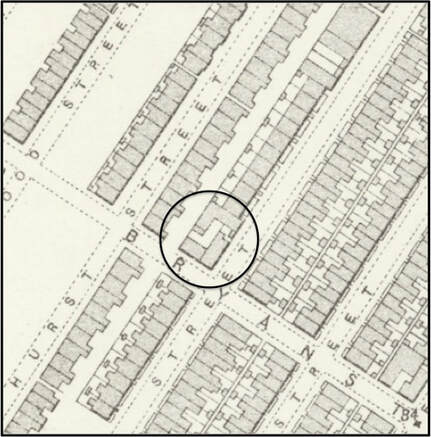 28 Errol Street and 1 Bryanston Road.
28 Errol Street and 1 Bryanston Road.
The Jones and Smith families are related through the marriage of Mary Jane Smith (b. 1872) and Richard Jones (b. 1870). They married in August 1896 at Holy Trinity Church, Toxteth. Mary Jane was living at home, 28 Hill Street, and her father is recorded as George Smith, Cowkeeper. Richard’s given address is 30 Caryl Street (perhaps he was a living-in worker there) and his father is recorded as David Jones, Farmer. Both families had Welsh roots, originating from Llanwnog in Montgomeryshire.
The couple took over a dairy and kept cows at 20 Hesketh Street, off Lark Lane, Aigburth (1901 census). They had two children: David George Jones (1897-1984) and Cyril Reginald Jones (1906-1970). The two boys grew up helping to run the dairy. When his sons were old enough, Richard changed the name of the business to Richard Jones & Sons. By 1926 (directory), Richard had extended his business to include a large dairy to the south-west of Aigburth Road. He acquired this property, on the corner of Errol Street and Bryanston Road, from William Owen. It was such a large complex that it had two entrances and, therefore, two addresses: 1 Bryanston Road and 28 Errol Street. These were often listed separately in the local directories.
The couple took over a dairy and kept cows at 20 Hesketh Street, off Lark Lane, Aigburth (1901 census). They had two children: David George Jones (1897-1984) and Cyril Reginald Jones (1906-1970). The two boys grew up helping to run the dairy. When his sons were old enough, Richard changed the name of the business to Richard Jones & Sons. By 1926 (directory), Richard had extended his business to include a large dairy to the south-west of Aigburth Road. He acquired this property, on the corner of Errol Street and Bryanston Road, from William Owen. It was such a large complex that it had two entrances and, therefore, two addresses: 1 Bryanston Road and 28 Errol Street. These were often listed separately in the local directories.
There is a family photograph of the Joneses very proudly showing off their three milk horses, outside the dairy in Errol Street. The photograph is captioned as follows: 1st and 2nd Prize Winners, Liverpool & Prescot Show, 1927. I have not yet been able to ascertain whether these prizes were for the family’s cows or for their horses. Either way, the family were clearly enjoying their success.
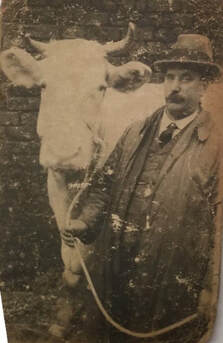 © Sue Murray 2020
© Sue Murray 2020
In 1928, their eldest son, David George Jones married Mary Helena O’Brien and they took over the dairy at 20 Hesketh Street. Of their five children, only two survived childhood: Valerie Patricia Jones (1932-2013) and George Alan Frederick Jones (1936-1983). The family is recorded at Hesketh Street in the 1939 Register – David’s occupation is given as Dairy Farmer and Mary Helena’s as Dairy Worker. When David George died, in 1984, his given address was 28 Errol Street, Aigburth.
Richard continued the cowkeeping tradition of showing his cattle, and in 1938 he picked up a Fourth Prize (£1) at the Royal Lancashire Show — his address was given as 28 Errol Street. That year, Richard found himself up against some stiff opposition; his brother-in-law, George Smith (of Caryl Street), took First Prize (£5)! He was also a member of the Liverpool & District Cowkeepers’ Association and amongst the family heirlooms are photographs of a grand day out for the cowkeepers, enjoying a picnic in Llandudno.
The 1939 Register records Richard and the rest of his family at 1 Bryanston Road (28 Errol Street is not listed as a separate property): Richard Jones (Cowkeeper, Dairy), Mary Jane Jones (Unpaid Domestic) and Cyril R Jones (Dairy Farmer). In the 1974 directory, Richard Jones & Sons is still listed, under Dairymen, at both the Bryanston Road and Errol Street addresses.
memories of errol street dairy
Vic Ward:
In 1954, as a 13-year-old, I worked for Jones's dairy in Errol Street off Aigburth Road and used to drive a horse and cart delivering milk to the Lark Lane area.
In 1954, as a 13-year-old, I worked for Jones's dairy in Errol Street off Aigburth Road and used to drive a horse and cart delivering milk to the Lark Lane area.
Lynn Asbridge:
I lived in Errol Street. Jones’s dairy sold the most amazing Cheshire cheese. At that time it was a general store and I don’t believe they had livestock, but may have had hens. Val, the daughter of the owner, had an enormous blonde beehive hair-do. I think it was her mother who when asked for some cheese would take the big glass dome off, cut the cheese, place it in grease proof paper and wrap it up.
I lived in Errol Street. Jones’s dairy sold the most amazing Cheshire cheese. At that time it was a general store and I don’t believe they had livestock, but may have had hens. Val, the daughter of the owner, had an enormous blonde beehive hair-do. I think it was her mother who when asked for some cheese would take the big glass dome off, cut the cheese, place it in grease proof paper and wrap it up.
Glen Huntley:
Jones’s Dairy sold amazing Cheshire cheese they kept under glass domes. All the walls were covered with dark wood shelves with groceries on and she had a long stick she would use to reach the top shelves.
Jones’s Dairy sold amazing Cheshire cheese they kept under glass domes. All the walls were covered with dark wood shelves with groceries on and she had a long stick she would use to reach the top shelves.
